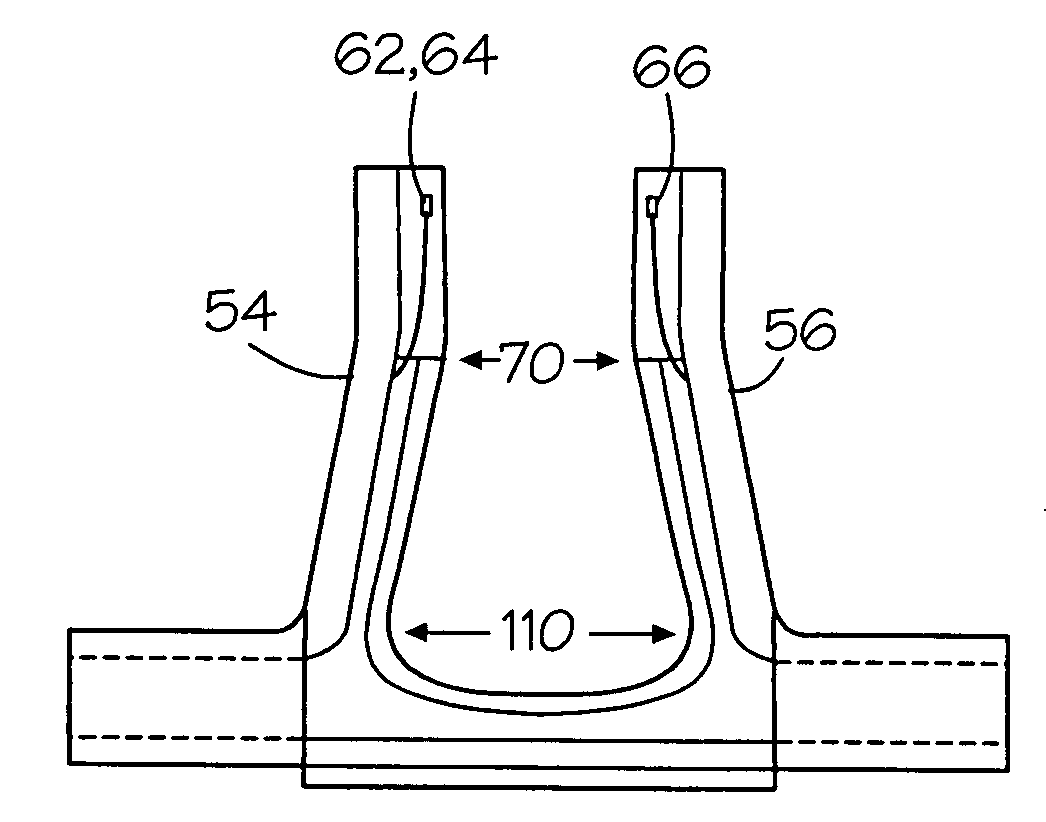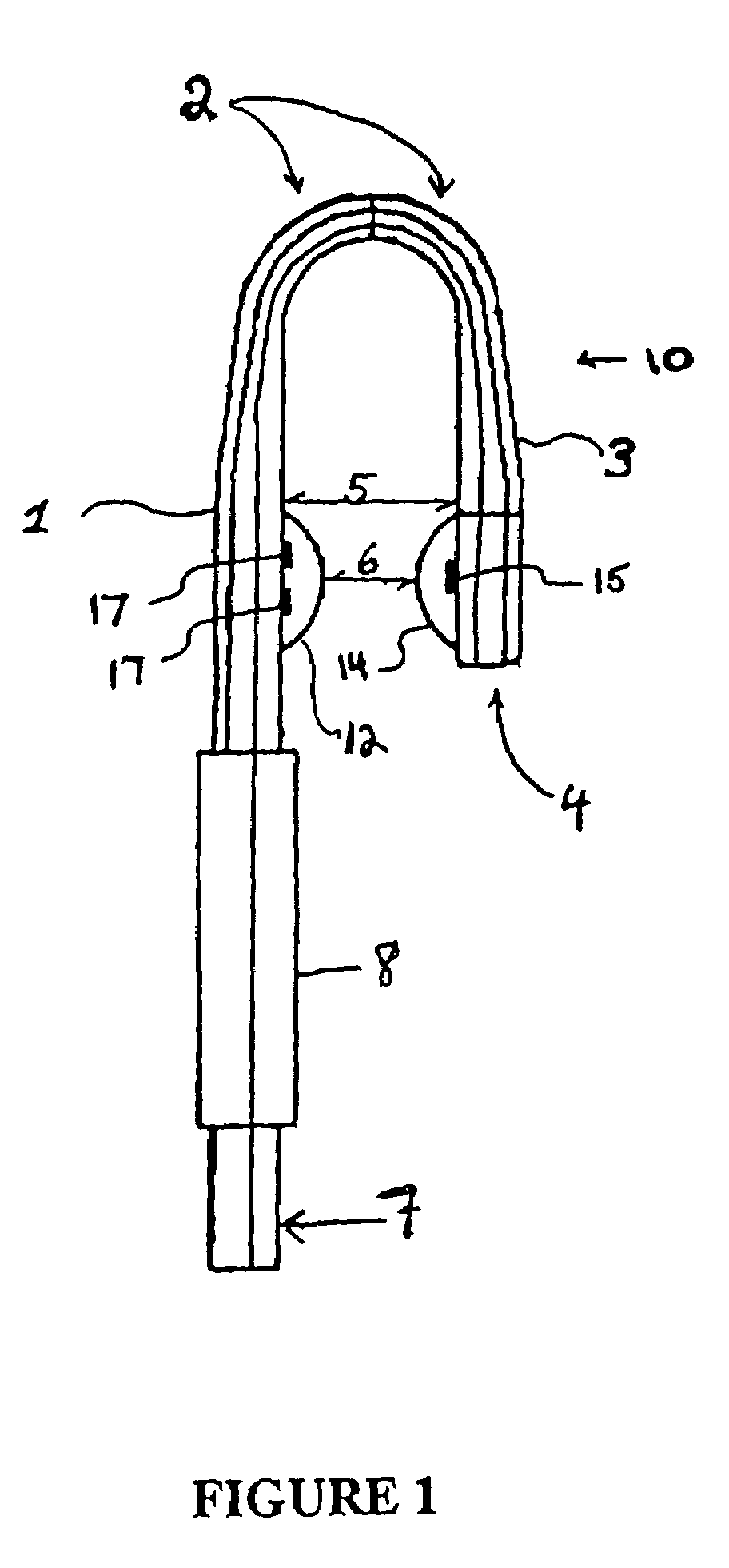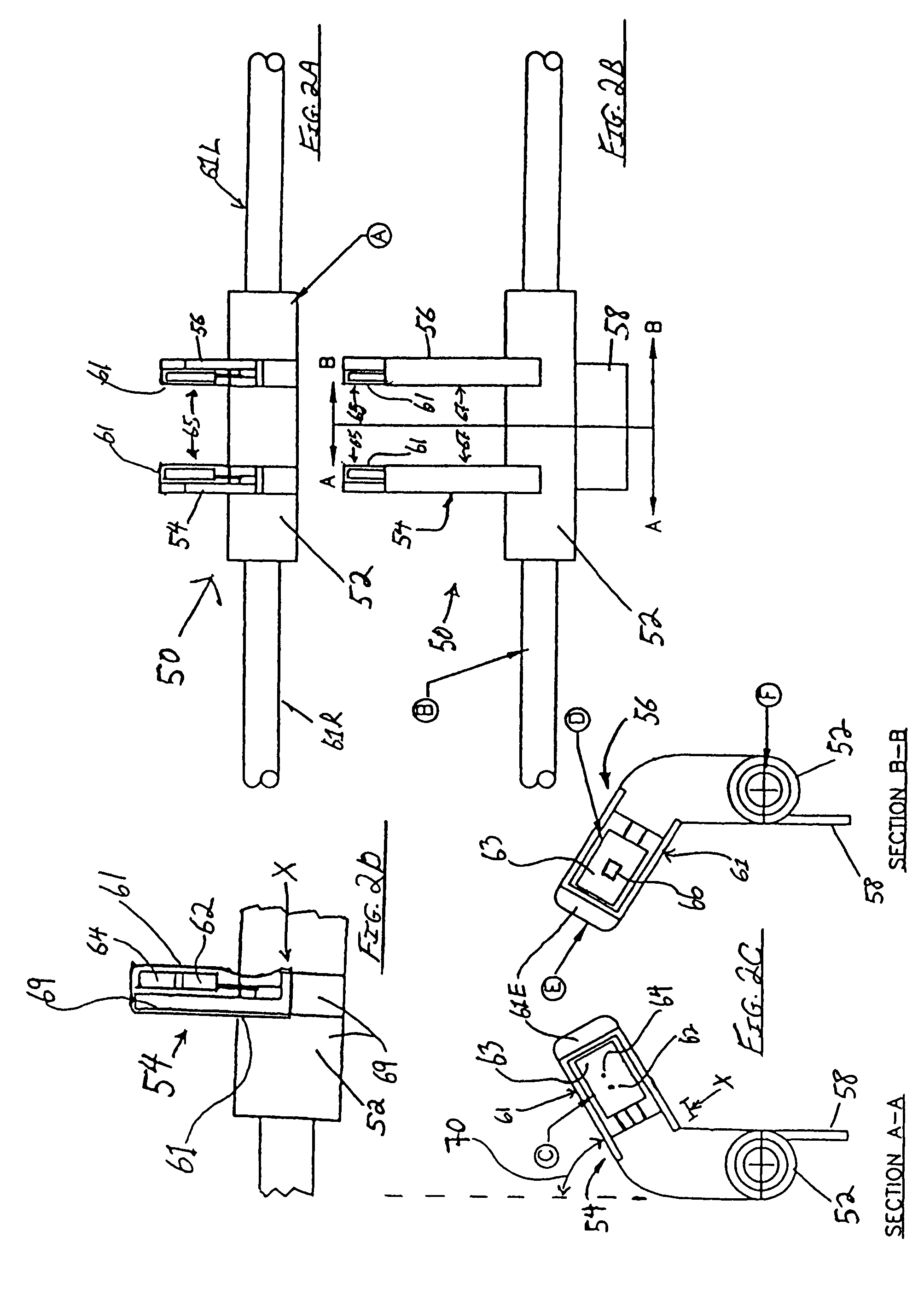Specially configured nasal pulse oximeter/photoplethysmography probes, and combined nasal probe/cannula, selectively with sampler for capnography, and covering sleeves for same
a technology of photoplethysmography and pulse oximeter, which is applied in the field of non-invasive measurement of signals, can solve the problems of poor blood flow, inadequate resuscitation, adversely affecting blood flow to and in the limb, etc., and achieves the effect of low cost and easy fabrication
- Summary
- Abstract
- Description
- Claims
- Application Information
AI Technical Summary
Benefits of technology
Problems solved by technology
Method used
Image
Examples
example 1
[0138]Data from a small number of volunteer subjects was obtained. This data provided preliminary support for the hypothesis that differences in CSS and PS estimates of arterial blood oxygen saturation levels can provide diagnostic information about the status of peripheral blood circulation. These data are summarized below.
[0139]All sets of data were taken three times, except that data for subjects 1 and 9 were only taken two times (duplicate data sets). Subjects 1–3 had no history of chronic obstructive pulmonary disease or other conditions that would be expected to cause lowered peripheral circulation. Except for one reading of 93% for subject 1, all estimates of arterial oxygen saturation were 95% or higher, and the PS (a finger, using a standard commercial probe) readings were within two percentage points of either CSS sites (lip and cheek). For the data set in which subject 1's cheek probe reading was 93%, the lip reading was 98% and the finger reading was 96%. Overall, the da...
example 2
[0145]An elderly patient with relatively advanced diabetes comes in for monitoring of the status of perfusion in the right leg, which is diagnosed with severe atherosclerosis and related impaired vascular perfusion. A monitor of the present invention is utilized, with one CSS probe measuring signals across the nasal septum, and a PS probe on the large toe of the right foot. A new medication is started, and ongoing weekly data from the monitor tracks the changes in perfusion in the right leg by comparing oxygen saturation values of the CSS probe with the values of the PS probe. Such data indicates the degree of effectiveness of the new medication.
example 3
[0146]A critically burned patient is brought into an emergency room. As vital signs and assessment is taking place, a pulse oximeter probe as shown in FIG. 1 is placed into the patient's mouth to read cheek tissue as a central site source, and a pulse oximeter probe as shown in FIG. 4 is placed at each of the patient's large toes. Within less than one minute, the monitor of the present invention indicates below normal blood perfusion in the right leg, based on the signals from the probe placed on the right toe, compared to the central source site and the left toe probe. A probe is placed on a right finger, and this provides comparable data to the left toe. The attending physician is able to surmise that an injury or disease condition is adversely affecting perfusion in the right leg, orders more detailed testing, and increases the percent oxygen on the respirator to counter the low oxygen in the affected leg. The monitoring system tracks changes in the oxygen saturation values of bl...
PUM
 Login to View More
Login to View More Abstract
Description
Claims
Application Information
 Login to View More
Login to View More - R&D
- Intellectual Property
- Life Sciences
- Materials
- Tech Scout
- Unparalleled Data Quality
- Higher Quality Content
- 60% Fewer Hallucinations
Browse by: Latest US Patents, China's latest patents, Technical Efficacy Thesaurus, Application Domain, Technology Topic, Popular Technical Reports.
© 2025 PatSnap. All rights reserved.Legal|Privacy policy|Modern Slavery Act Transparency Statement|Sitemap|About US| Contact US: help@patsnap.com



